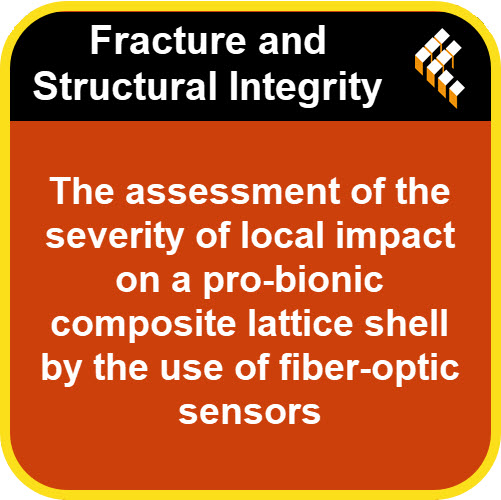Fracture and Structural Integrity: The Podcast
Stay at the cutting edge of fracture mechanics and structural integrity research with the official podcast of the Fracture and Structural Integrity journal. Join us for insightful interviews with top researchers, in-depth discussions of groundbreaking papers, and explorations of emerging trends in the field.
RSS Spotify YouTube Amazon Music
The assessment of the severity of local impact on a pro-bionic composite lattice shell by the use of fiber-optic sensors
2025-04-26
https://www.fracturae.com/index.php/fis/article/view/5408
The paper considers a pro-bionic lattice shell (PBLS) for civil aviation structures and the problem of getting the parameters of a local low-velocity impact taking the value of residual strain by fiber optic sensors (FOS) installed in PBLS. There was developed a numerical model of an equivalent smooth shell with a detailed part as an impact zone. This detailed part have been constructed from a load-bearing rib containing layers of UD composite, matrix polymer, a protective tab and a skin. The matrix polymer layers and the protective tab had elastic-plastic properties, in the developed numerical model. The UD composite layers and the skin were orthotropic elastic media. FEM calculations showed that the location of FOS directly on the rib surface does not provide the required accuracy of getting impact residual strain. However, FOS installation into elastic-plastic protective tab makes solving the problem. Localized Bragg grating sensors must be installed into the FOS with a high density (every 1-2 cm along the rib) to indicate the impact location, which is technically difficult to implement. Distributed sensors (Brillouin scattering) have an advantage, allowing both to indicate the impact location by residual strain recording and to get possibility calculate later the most important parameter - the impact energy.
DownloadFiletype: MP3 - Size: 8 MB - Duration: 6:42m (160 kbps 24000 Hz)
Powered by Podcast Generator, an open source podcast publishing solution | Theme based on Bootstrap
